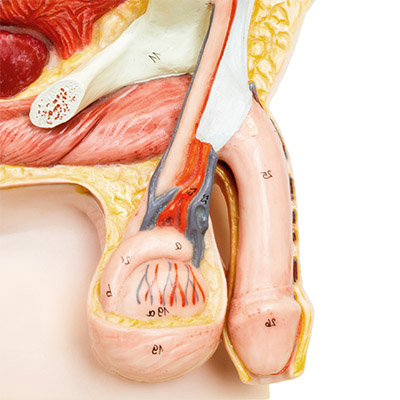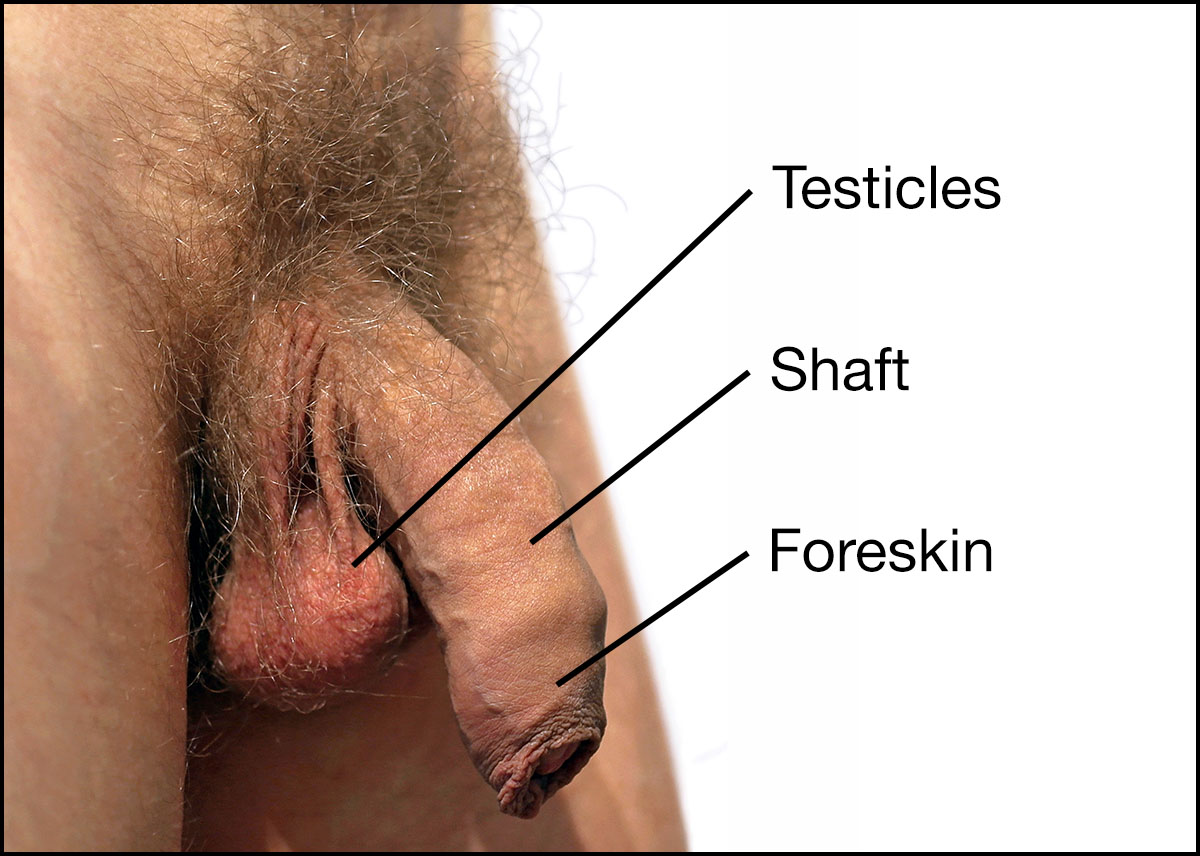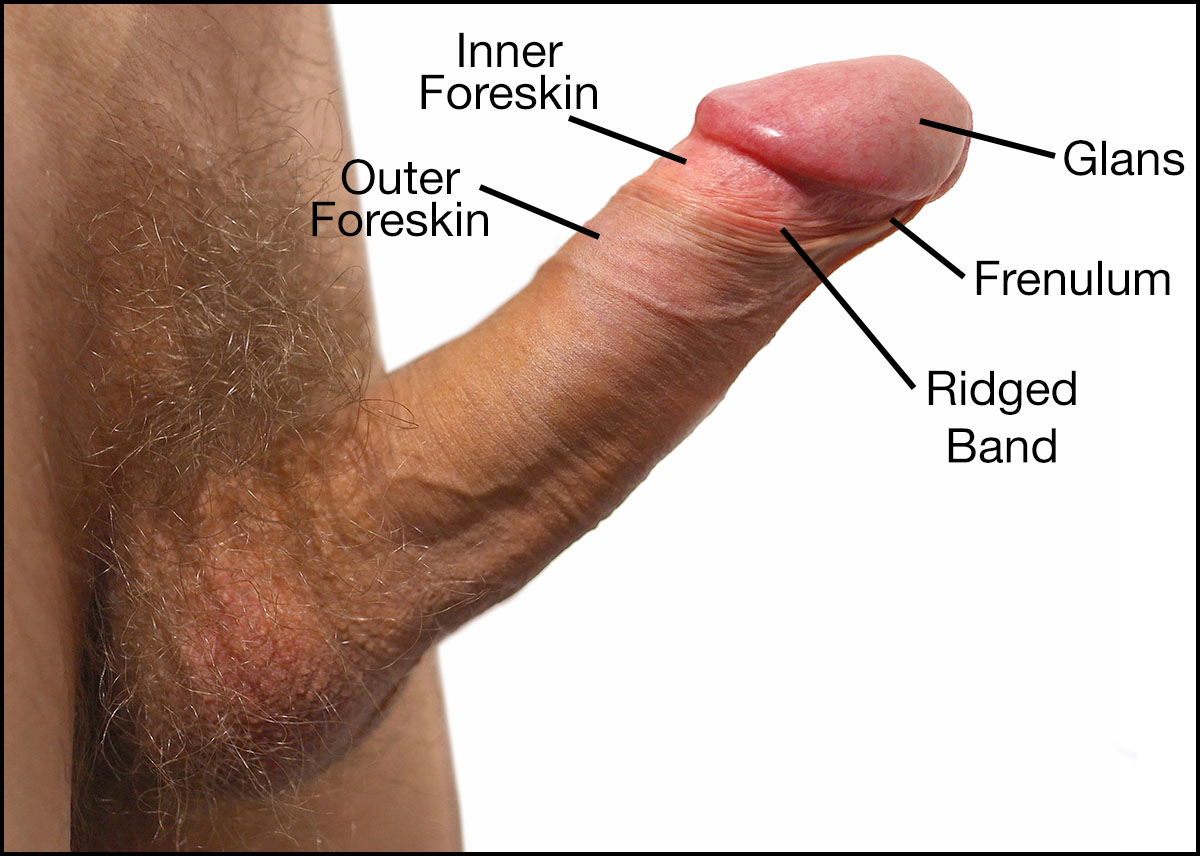



Some parents worry that their intact boys will be made fun of in the locker-room or elsewhere. Circumcision is much less common than before, so your intact son will be in good company. More importantly, children are teased and bullied for all kinds of reasons, and need to be taught how to handle such misbehavior.
In baby boys, the foreskin is attached to the glans (head of the penis) and protects it from urine, feces and abrasion. Surgical removal of the foreskin creates an open wound, which parents will have to care for at every diaper change. Just as parents teach their children to brush their teeth and wash behind their ears, they can teach their sons good penile hygiene. Once the foreskin becomes naturally retractable, any boy can learn the three Rs: Retract–Rinse–Replace.
Urinary tract infections (UTIs) – Doctors who promote circumcision often cite a lower risk of UTIs in circumcised baby boys. The reason for this is unknown, though one cause might be improper handling of the intact penis by parents who have been mistakenly told to forcibly retract their son’s foreskin. (The foreskin should never be forcibly retracted.) Actually, girls are about eight times more likely to get UTIs than boys – even circumcised boys. And just as UTIs in girls are easily treatable with antibiotics, so are UTIs in boys.[13][14]
Sexually transmitted infections (STIs) – Babies are not at risk for sexually-transmitted infections. As they grow up, they should be taught about good health and safe-sex practices, such as abstinence and the use of condoms.
Scientific evidence shows that babies feel pain as much or more than adults, and that the negative effects of infant pain (measured by brain activity and behavior) can last for months or even years. Circumcision is painful at any age but – unlike a baby – an older person who decides to have the surgery can understand what is going on, and knows the pain will be transient. Saying “it’s better to do it earlier than later” presumes that a boy will eventually need to be circumcised, when the truth is the opposite – very few adult men will ever need or choose to remove their foreskins.
Circumcision is very painful, as anybody who has witnessed the procedure can testify. Only about half of boys receive any sort of pain killer, and even then, the most powerful analgesics do not eliminate all pain.[15] Some babies go into shock from the pain. Experiencing severe pain and trauma in infancy can have long-term neurological and psychological consequences.[16]
Circumcision – the surgical removal of the foreskin – leaves a scar on the penis. Scar tissue is not as resilient as normal flesh so, as a boy grows, scar tissue from his circumcision can “tether” his penis and restrict its growth. The adult circumcised penis is, on average, 4mm less wide and 8mm shorter than the average intact penis.[37]
While the risk of death following circumcision is low, deaths do occur, usually from blood loss or infection. About one in 11,000 circumcised boys will die from circumcision-related cause.[17]
Circumcision creates a raw, open wound on the penis, which then is exposed to urine and feces in the baby’s diaper. The intact penis has no such open wound.
Circumcision complications include scarring, skin bridges (adhesions), painfully tight erections, bent penis, and very often meatal stenosis (narrowing of the urinary opening, which makes urination difficult).[18]

There is no evidence that the foreskin causes disease, nor that removing it makes men healthier. Only one in 250 adult men will ever need to be circumcised to treat a medical problem.[19]
Contrary to claims that the foreskin is unclean, it has a protective function, and its loss makes the penis more vulnerable to abrasion and injury. Boys can be taught to wash their foreskins during regular bathing; it takes just a few seconds.
There is no evidence that being circumcised prevents a man from getting a sexually-transmitted infection, including HIV.[20] Only abstinence or safe sex can do that.
Some parents believe their sons will be less attractive to women when they grow up if they do not have a circumcised penis. But we’ve heard from both men and women that this is not the case. As the intact penis becomes more common, our culture will once again accept it as normal.
Penile cancer is extremely rare, accounting for less than one percent of cancers in American men. The American Cancer Society does not recommend circumcision for the prevention of penile cancer.[21]
The foreskin is a sensory organ with thousands of nerves and blood vessels as well as muscular tissue. It plays an important role in foreplay, sexual activity and pleasure, and ejaculation.
Circumcised men are three to four times more likely to experience erectile dysfunction (ED) than intact men.[22][23]
Emotional harm from circumcision has been widely reported, not only by men who struggle with feelings of betrayal, but also by parents who regret a decision that is impossible to reverse.
Circumcised men say they feel “exposed” or “nuder than nude” when in the company of naked intact men.
Many men are working to restore their foreskins, to feel "more whole." They report increased sensitivity in the glans, and a more positive body image.

The foreskin—which is present in all mammals—evolved in all mammals to serve both a protective and reproductive role.
In the womb, in infancy, and through puberty, the foreskin develops in a very specific way, responding both to hormones and the body’s own DNA.
The foreskin protects against feces and urine in the diaper, and against other external irritants. As the child grows into toddlerhood and beyond, it slowly becomes retractable. The age of retraction varies greatly, and some men’s foreskins never fully retract.[24] This is all normal, so long as the boy or man doesn't experience pain or other problems.

The foreskin is not “extra skin,” but rather a specialized, double-layered structure containing nerves, blood vessels and muscles.
When flaccid (at rest), the foreskin covers the glans (head of the penis) and the meatus (urinary opening), protecting them from irritants and chafing.

When erect, the foreskin rolls back, exposing the glans, frenulum, and the inner foreskin with its ultra-sensitive ridged band. The ridged band contains about the same number of nerve endings as the female clitoris.[25]
The foreskin plays an indisputable role in sexual intercourse. The inner surface of the foreskin, together with the smooth glans of the intact penis, ease penetration and reduce friction. The foreskin rolls back and forth during intercourse, greatly increasing both partners' pleasure.[26]

When the foreskin is removed at birth, the glans—which was designed by nature to be an internal structure—is permanently denuded. Exposure to urine and feces during babyhood, and chafing from clothing over time, cause the glans to dry out (keratinized) and become tougher and less sensitive.[27]
Little formal research on the foreskin or on male infant circumcision has been conducted because the practice began far earlier than evidence-based medicine was formalized and became a medical tradition in North America. Despite lack of evidence about circumcision’s effectiveness, many doctors find it challenging to resist the status quo.

In 2012, the American Academy of Pediatrics (AAP), issued a report with various contradictory statements,[29] among them:

Physician groups in Europe, the United Kingdom and Australia condemn infant and child circumcision on the grounds that it is not medically beneficial and violates children’s most basic human rights. In response to the AAP’s 2012 report, 39 physicians and ethicists published a critique,[30] stating:

In 2016, Dr. Andrew Freedman, a member of the 2012 AAP Circumcision Task Force, in 2016, published a commentary in the journal Pediatrics emphasizing the AAP’s conclusion that "health benefits are not great enough to recommend routine circumcision."[31]